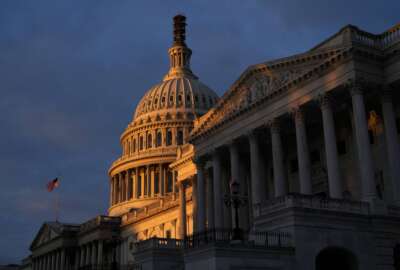
For USPS, another year, another mixed financial report
The Postal Service continues to press for substantial legislation changes to remain a competitor in the mail and package delivery field. It recorded its ninth...
The Postal Service continues to beat the same drum: it needs to change its business model if it wants to reverse nine consecutive years of billion-dollar losses.
USPS recorded a $5.1 billion net loss in fiscal 2015, yet it did earn controllable income — or operating profits, which excluding retiree health benefit pre-funding expenses and interest rates on workers compensation — for the second straight year.
It brought in $1.2 billion in controllable income in 2015, down slightly from the $1.4 billion it made in 2014. Postal Service revenue increased by 1.6 percent over the last fiscal year, reaching $68.9 billion in 2015.
Postmaster General and Postal Service CEO Megan Brennan said the agency needs to look at the private sector if it wants to remain a competitor in the package delivery field.
“We clearly are putting pressure on the organization to establish additional partnerships, and also looking at where the market is going, the whole ship-from-store concept as well, is something that we’ve been aggressively pursuing,” she said Nov. 13 during a call with reporters. “The management team is focused on opportunities to grow the business and will continue to push to pull costs out and continue to drive operational efficiencies throughout the organization. But we do note that controllable income will be hard to sustain in the coming years, absent substantive changes to our business model, and this requires legislative change.”
Brennan said USPS is working with members of Congress from both parties on reform and said she was “cautiously optimistic” she could find some sort of congressional consensus.
“We believe we’re making some progress on finding common ground, and we know how important it is to the future of the Postal Service, to our employees and the mailing industry,” she said. “We need to be on firmer financial footing.”
A blueprint for reform
But the agency has long pushed for legislative reform, with little to no tangible results. The latest attempt came from Senate Homeland Security and Governmental Affairs Committee Ranking Member Tom Carper (D-Del.), who introduced legislation in September.
The Improving Postal Operations, Service and Transparency Act of 2015 addresses a legal requirement — which USPS has long argued against — to prepay retirees’ health care.
The most recent USPS financial report shows Congress needs to pass postal reform sooner rather than later, Carper said. He said he hopes his bill serves as a “blueprint.”
“The Postal Service’s package delivery products continue to show great promise, but given the institution’s longstanding financial and legislative burdens, coupled with an ongoing decline in the volume of first-class mail, this welcome news just isn’t enough to get the Postal Service out of the red,” Carper said in a Nov. 13 statement. “The only way to alleviate the Postal Service’s financial challenges and take advantage of the opportunities it has to grow in the digital age is for Congress to come together and pass comprehensive postal reform legislation as soon as possible.”
Carper’s bill would create a new health benefits program within the Federal Employees Health Benefits Program specifically for postal employees and annuitants, and require that eligible employees and annuitants also enroll in Medicare.
Like past years, USPS could not make its payment of $5.7 billion this year, said Joe Corbett, the Postal Service’s chief financial officer.
“Total liabilities, including retirement obligations, exceeds assets by over $100 billion,” he said. “It’s an awfully deep hole, but frankly, we could take care of almost half of that with Medicare integration. [We’d] also need years of sustained profits after that to chip away at the rest of this excess of liabilities.”
The agency also is paying more in compensation and benefits, due in part, to an increase in work hours as its employees need more time to process and deliver packages, Corbett said.
“We’ve contributed over $28 billion into Medicare, and we should have the requirement and the right to withdraw, just like any other organization that contributes,” he said.
The Postal Service’s operating expenses went up 0.9 percent this year as well, and the agency will soon need to make upgrades to its processing and delivery systems in the next year or so, Corbett said.
The National Association of Letter Carriers took a more positive view on the Postal Service’s annual financial report, specifically citing a $1.1 billion increase in revenue over the previous fiscal year.
“Today’s good news is consistent with — and reinforces — the growing momentum to move forward with constructive reform that all stakeholders can buy into,” Fredric Rolando, NALC president, said in a statement.
Total productivity rates for USPS have risen for the sixth consecutive year, Brennan said. And though the demand for first-class mail is down, standard-mail volume is stabilizing.
The Postal Service also expects to see a 10 percent jump in package volume during the holiday season this year, Brennan said. USPS will hire 30,000 temporary employees for its peak delivery season.
Copyright © 2025 Federal News Network. All rights reserved. This website is not intended for users located within the European Economic Area.
Nicole Ogrysko is a reporter for Federal News Network focusing on the federal workforce and federal pay and benefits.
Follow @nogryskoWFED



